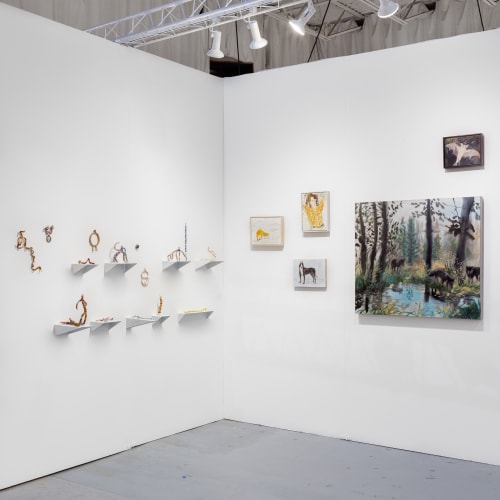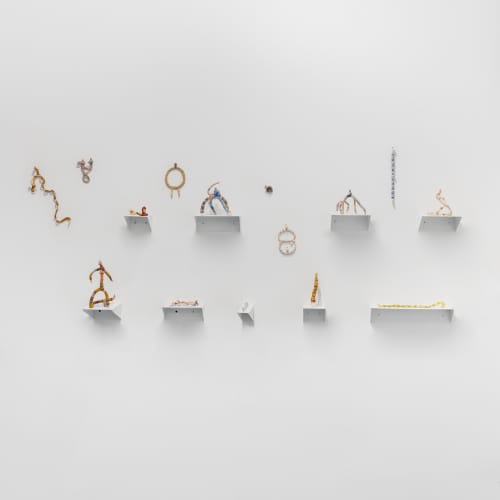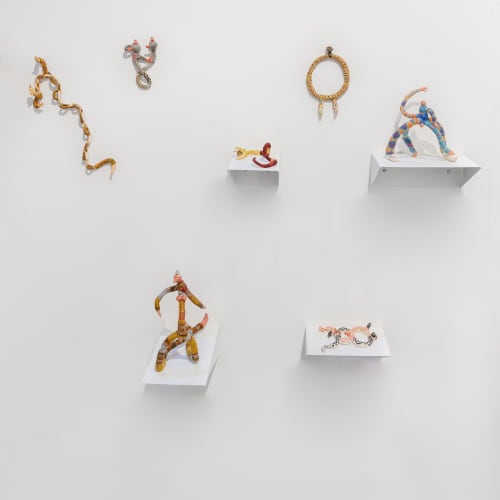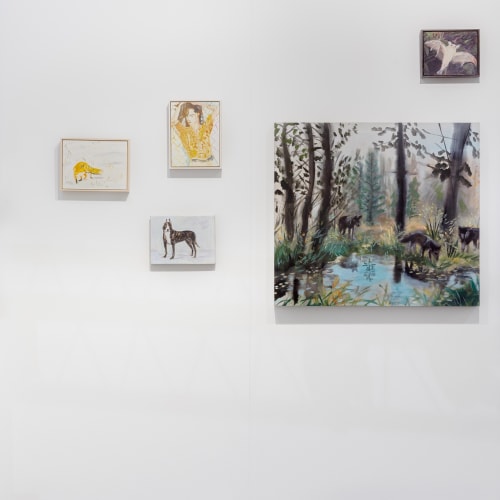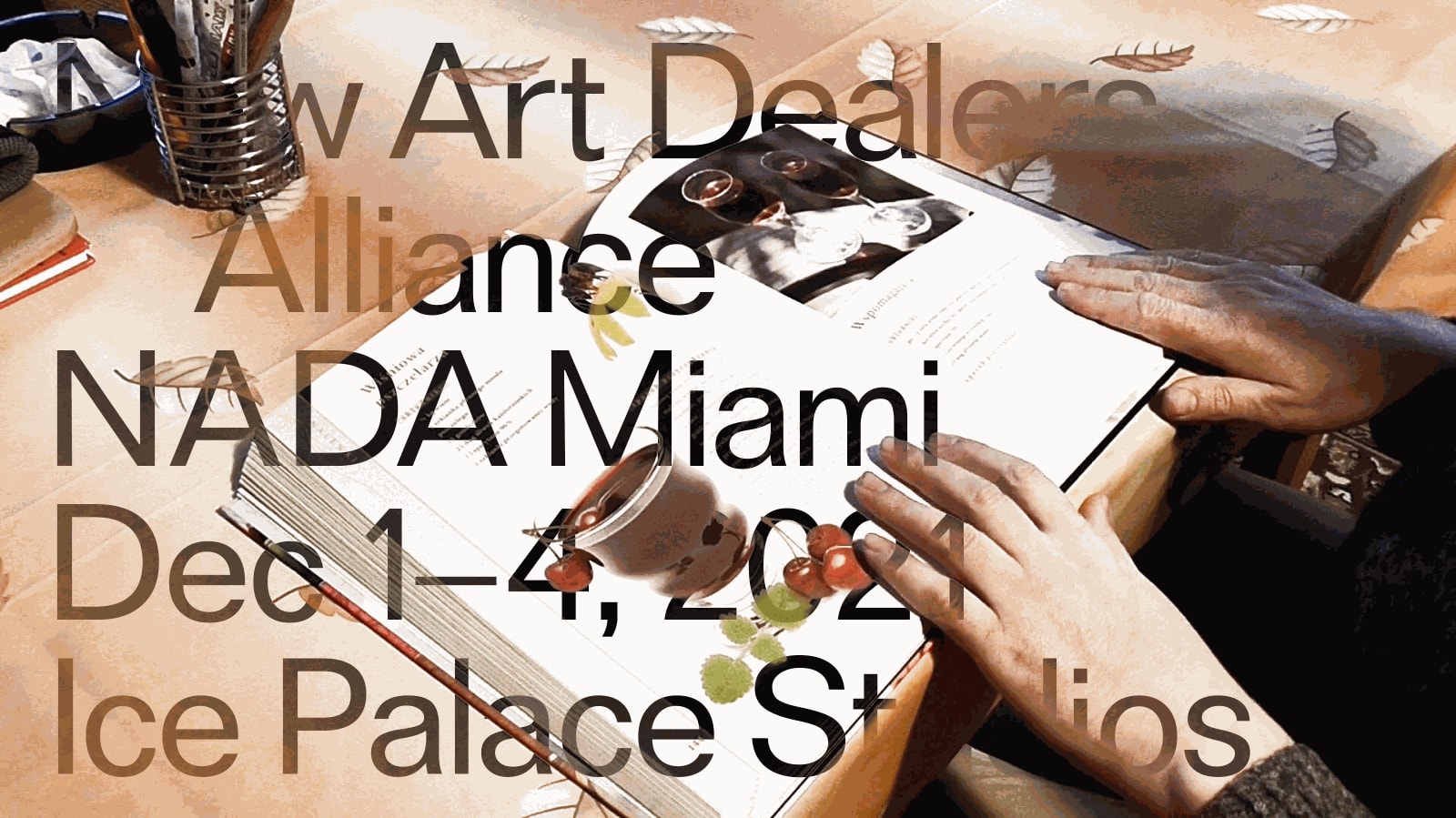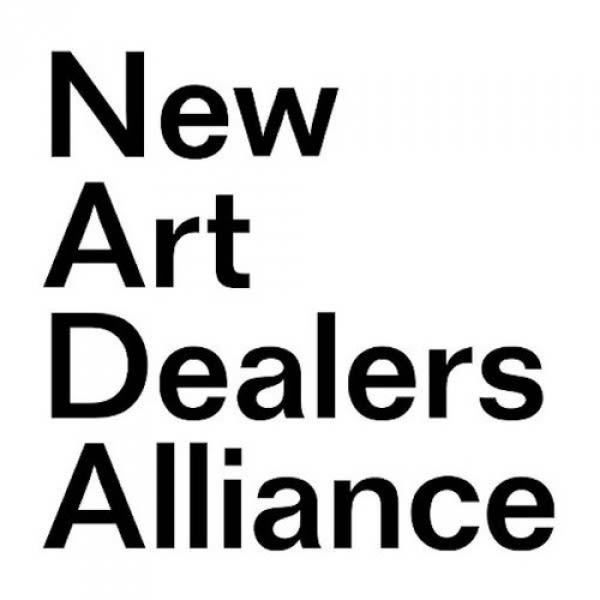Goldfinch’s booth at NADA Miami – Projects section pairs the work of Mari Eastman and Em Kettner to explore themes of what it means to look and to be looked at; how distinctions between human, animal, and “other” creatures are constructed and perpetuated through pop culture images; and how notions of tenderness and care (of othered human bodies as well as wildlife) are expressed through, and in turn incited by, contemporary works of art.
Mari Eastman’s framed paintings will be displayed on the walls in a loose, salon-style formation. Eastman’s subject matter shifts frequently between the realms of nature and culture: lush forest landscapes and animals such as wolves, bats, possums, cats and kittens show up often, but so do well-coiffed feminine figures wearing gorgeously patterned shirts, dresses and handbags. Other ongoing inspirations include Asian decorative arts, vintage fabric patterns and the artist’s wistful memories of the past. Eastman, who graduated from the School of the Art Institute in 1996 and lived and worked in Los Angeles for well over a decade after that, hails from a late 90s generation of artists for whom distinctions between high and low, upper-class taste and kitsch are irrelevant. All are embraced as part of the spectrum of consumer longing and the complex construction of identity and subjectivity by media, wherein photographic images serve not just as a ready source material but also as totems of desire. Media images are one mechanism through which seemingly “authentic” desires are constructed, then sold back to us, which is why for Eastman an image clipped from a fashion or nature magazine can be just as compelling a subject as a picture from an art history book or a photo from her personal archives. Eastman’s paintings of wild forest animals and domestic pets remind us that our perception of what “nature” is—and this includes our own, human nature–is thoroughly shaped by culture. In turn, the artist’s fashion-themed images call attention to multifaceted allure of surface beauty, especially when it is expressed creatively through clothing, jewelry and accessories, which have the power to transform our bodies into walking works of art that speak to who we are, who we once were, how we see ourselves and our bodies, and who we desire to be.
Em Kettner’s curiously embodied porcelain sculptures, which are wrapped in colorful woven sheaths that function both as a garment and as a protective casing that holds separate parts together, will be displayed on individual shelves on the NADA Miami booth wall. “I present confinement and dependence as sensual and joyful conditions,” Kettner has explained of the scenarios in which her diminutive works partake. “Each ceramic serves as a tiny tapestry loom or shaped core for a woven basket, and in turn the weaving holds the porcelain in place.” Kettner works in miniature and uses materials that have been historically associated with domestic crafts “to merge the functional with the so-called functionless.” This is both an acknowledgement and critique of how physical disabilities and non-normative bodies have been classified as such when held against the classical ideal of the human form—itself an unattainable construct—which was created and is perpetuated in part by art and art history, fashion, film, television, celebrity culture and social media. In contrast, Kettner’s figures may have multiple heads and limbs or get by on a single foot. They are sometimes intertwined in ways that signify both erotic touch and assistive care. Displayed on protruding metal stands as well as a low table, the sculptures invite viewers to look closely at them from an eagle-eyed vantage point; they welcome lingering scrutiny and create a space where it is safe to look, and to be looked at.
